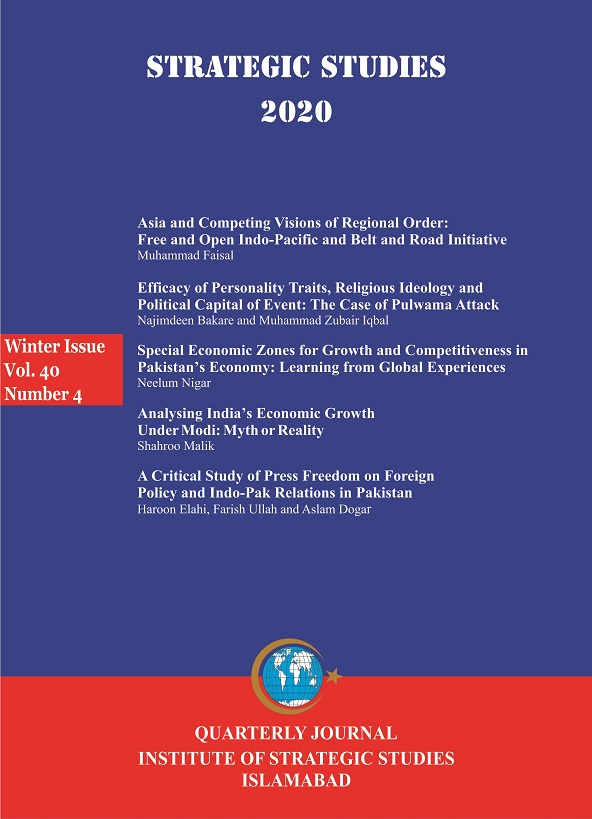Analysing India’s Economic Growth Under Modi: Myth or Reality
Keywords:
Indian Economy, Economic Growth, Modi, Demonetisation, GST ReformsAbstract
In 2016, India became the world’s major fastest growing economy leaving behind China.[1] India was growing at a steady rate of more than seven per cent till the Bharatiyia Janta Party (BJP) government introduced certain policies such as demonetisation initiative and Goods and Services Tax (GST) that severely impacted its economic growth. Since mid-2016 its economic growth started to decelerate and in 2019, India’s economic growth stood at 4.5 per cent even though Modi made tall promises of making India a US$5 trillion economy by 2024. Hence, by using the Keynesian Model of Growth, this paper tries to analyse the performance of Indian economy under Modi’s government, determine the cyclical, structural and global factors that have contributed to India’s slowed economic growth and the impact of Modi’s extremist policies on the Indian economy. This paper identifies demonetisation, GST reforms, falling private consumption, protectionism and strict labour laws and COVID-19 pandemic as the factors behind India’s slowed economic growth under the current regime of Modi.
[1] HerpreetKaur and Jagdeep Singh, “Indian Economy Developments (Special Emphasis on Narendra Modi Era Developments),” IBMRD’s Journal of Management & Research, no. 8 (2019): 35-40.

Published
How to Cite
Issue
Section

This work is licensed under a Creative Commons Attribution-NonCommercial 4.0 International License.



